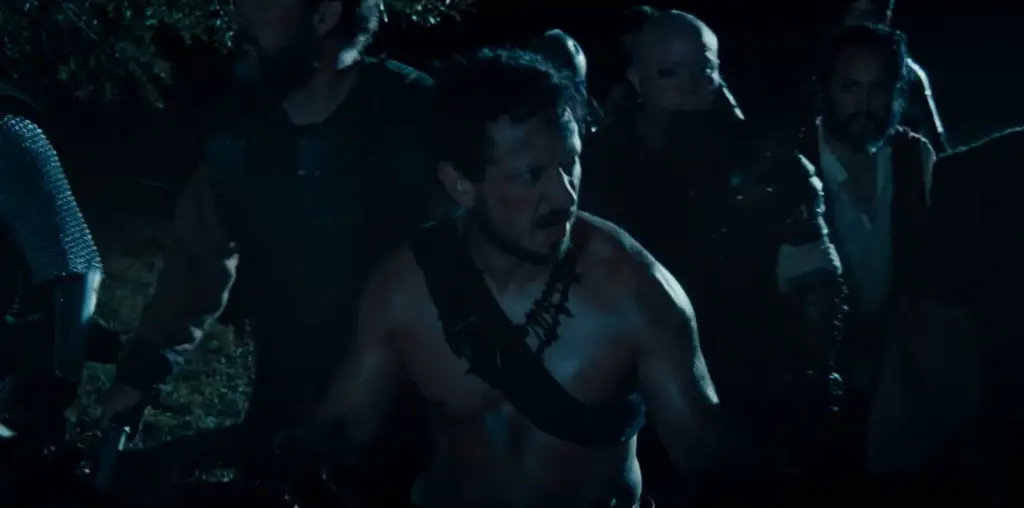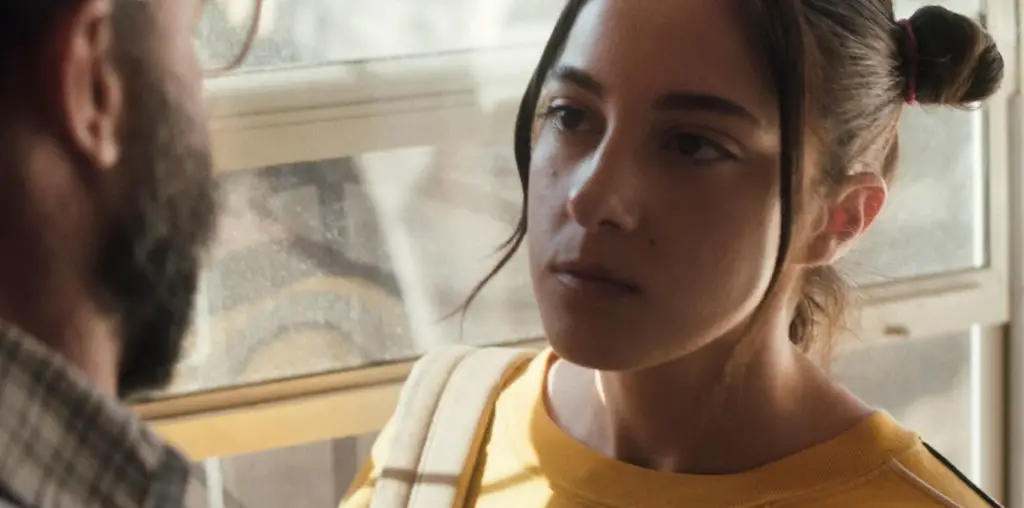
On the surface, “Rubber” shouldn’t work beyond a short film, but yet does. One dimensionally, we have a story of a tire coming to life, learning it is not only alive and that it can affect the world around it but also that it’s imbued with psychokinetic powers. It then goes on the road blowing up bottles, cans, animals and eventually peoples’ heads. Previously known for videos for the techno music he produces as Mr. Oizo, director Quentin Dupieux has either made a broad statement about filmmaking, Hollywood and movie plots, or simply presented us with a hilarious slice of absurdity.
A nerdy looking man in a suit stands on a desert road, two large batches of binoculars in each hand, looking nervous. A cadre of chairs lines the road, when a car comes driving down it swerving to destroy each one. Stopping at the end, a policeman hops out of the trunk and begins orating directly at the camera a series of questions about Hollywood films. “Why is E.T. brown? No reason. In the movie ‘JFK,’ why is the President shot by someone he doesn’t know? No reason” and so on, amusingly so, until he inevitably reaches the conclusion that “Life itself is made up of a series of no reasons.” Dumping out a glass of water he hops back in the trunk and is driven off. We now have binoculars man, played by Jack Plotnik, handing them out to an on-screen audience who, for the next hour and a half, observe the tire’s exploits from afar.
Watching the story develop it was easy to initially conclude that having a tire rise up, gain it’s momentum, much in the same way a baby animal learns to walk and hunt, that not much was to be gathered from what we were seeing. However as “Rubber” unfolds, flashing back and forth between the observers and the tire, the perspective is that Dupieux has more to say that was is presented superficially. Never once does “Rubber” delve into standard horror film fare, choosing instead to punctuate itself with moments of absurd comedy and a greater picture than what is presented. I won’t pretend to know if that was his intention but given the ending of the movie, it’s apparent more is at work here than simple “no reason.”
Assisting “Rubber” is a hilarious and yet subdued performance from the aforementioned Plotnik, the always amazing Wings Hauser as the man in the wheelchair, an observer smarter than his cohorts, and especially fantastic was Thomas F. Duffy as the sheriff who appears to be one of the men behind the scenes of Dupieux’s outrageous world. Every scene he’s in, from his opening monologue, to a particular funny scene later in the film where he tries to convince other police officers that what is happening isn’t real, Duffy shines. However, the star of “Rubber,” by far, is the tire, credited as Richard. As believable as a lifelike tire can be, the special effects team behind Richard should be commended for allowing us to see him as not just a steel belted radial. He comes off as a creature finding it’s way in the world and even falls in love with the gorgeous Roxane Mesquida, a girl he stalks. Enhancing every speaking performance is Dupieux’s choice of dialogue delivery. Seemingly influenced by the monotone, never interrupting each other style of a Hal Hartley film, it’s an interesting choice which adds to the oddity of the movie, as well as making it just that much more unsettling.
“Rubber” is not for everyone but Dupieux has created a movie with an emotional connection with an inanimate object while delivering plenty of laughs and succeeding as a feature length movie. Whether you come out of it thinking that you saw a clever story about a tire that explodes people’s heads or one that you can discuss with your friends about what it’s trying to say about movie themselves, “Rubber” is something that certainly needs an audience. If anything, you can be certain you’ve not seen anything like it.
This review was originally published on September 26, 2010

